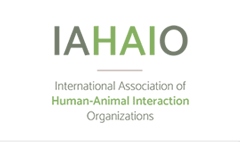Abstract
A wealth of recent behavioral, neurobiological, and genetic results allows us to draw a new, comprehensive picture of the human-wolf- dog relationship. Dogs originated from wolves 35,000 years ago, mainly via selection for tameness. Wolves were probably spiritual partners and hunting buddies of Paleolithic hunter-gatherers over wide areas of Eurasia. Coming together and staying together was probably facilitated by the close ecological and social match between wolves and humans. Both are cursorial hunters and scavengers living in cooperative but relatively closed family groups, which selected for very similar mentalities.
Parallel selection for tameness (i.e., being “nice”) in dogs and humans quickly and in a diverse way changed behavioral and anatomical phenotypes from wolf to dog, and social orientation from Stone Age to modern humans. Actually, dogs were the most important human companions in conquering the world. By adapting to the needs of diverse human societies and civilizations, a wide variety of dogs developed. Over long periods of history dogs were meant to be benign with their own humans, but not with strangers. Hence human ingroup-outgroup distinctions may explain why considerable aggressiveness may still be found in dogs and humans, although incompatible today with a globalized world and universal ethics. In dogs this can be easily controlled by selective breeding and in humans, less easily, by cognition. Actually, sledge dogs and modern hunting breeds were selected for tolerance in the past.
Most recent scientific results not only underline how closely dogs match human operational and social needs, but also find that most of the dog’s social behavior, cognition, and cooperativeness is direct wolf heritage and did not emerge in domestication, as previously thought. Dogs have adjusted to human needs in many subtle ways in the course of domestication. This makes dogs much better companions than tame wolves. Dogs are more easily socialized; they are strongly tuned toward people, respect human leadership, and are superior receivers and donors of emotional social support. Dogs actually became more obedient and respectful of social hierarchies than wolves, more dependent on human support, and better at inhibiting their impulses. Dogs diversified their barking for communicating with humans. They can read our emotions and adjust to them in an empathic way. Dogs are capable of human-like thinking, of taking a human perspective, and even of tricking us. Not least, they share a sense of fairness with wolves and humans.
Hence, dogs can be particularly valuable partners in meeting universal human social needs. Human-dog relationships are “essentialized,” lacking the cultural and symbolic complexities of relationships between humans. But the devotion of dogs is not unconditional; they do judge our moods and social conduct and make their choices accordingly. Dogs can boost the self-esteem and agency of their human partners and are excellent “social lubricants,” thereby connecting people. Actually, in their flexibility, social devotion, adaptiveness, and responsiveness, dogs are the stars among all animal companions. No wonder, as the human-dog relationship started in the early Paleolithic, tens of thousands of years before the domestication of other animals. Dog companionship seems increasingly important in a globalized and digitalized world. An ever accelerating pace of life may not always provide the conditions needed to keep people physically and mentally healthy. Living in good relationships with dogs can keep people connected with their social essentials.
Therefore, dogs are prime animal assistants in a wide range of activities, pedagogy, and therapy. Supported by human biophilia, the presence of a friendly dog may have strong calming and socializing effects on humans and may support communication and sociopositive behavior. Dogs are probably the most socially responsive of all companion animals, privately and in professional settings. In all such activities (for definitions please see the White Paper of the International Association of Human-Animal Interaction Organizations [IAHAIO], Jegatheesan et al., 2014), well-socialized and friendly dogs respond well to temporary and positive challenges, but must never be overburdened. It requires a suitable dog in a secure relationship with a sensitive and knowledgeable human partner. Furthermore, it has to be kept in mind that dog partners need regular veterinarian checks in the interest of the animals’ health and welfare and to minimize health risks (e.g., zoonoses) for the human partners. All activities and work need to conform to the IAHAIO Guidelines for Animal-Assisted Activities and Animal-Assisted Therapy (Prague, 1998) and with the IAHAIO White Paper (Jegatheesan et al., 2014).
Recommended Citation
Kotrschal, Kurt
(2018)
"How Wolves Turned into Dogs and How Dogs Are Valuable in Meeting Human Social Needs,"
People and Animals: The International Journal of Research and Practice: Vol. 1
:
Iss.
1,
Article 6.
Available at:
https://docs.lib.purdue.edu/paij/vol1/iss1/6


